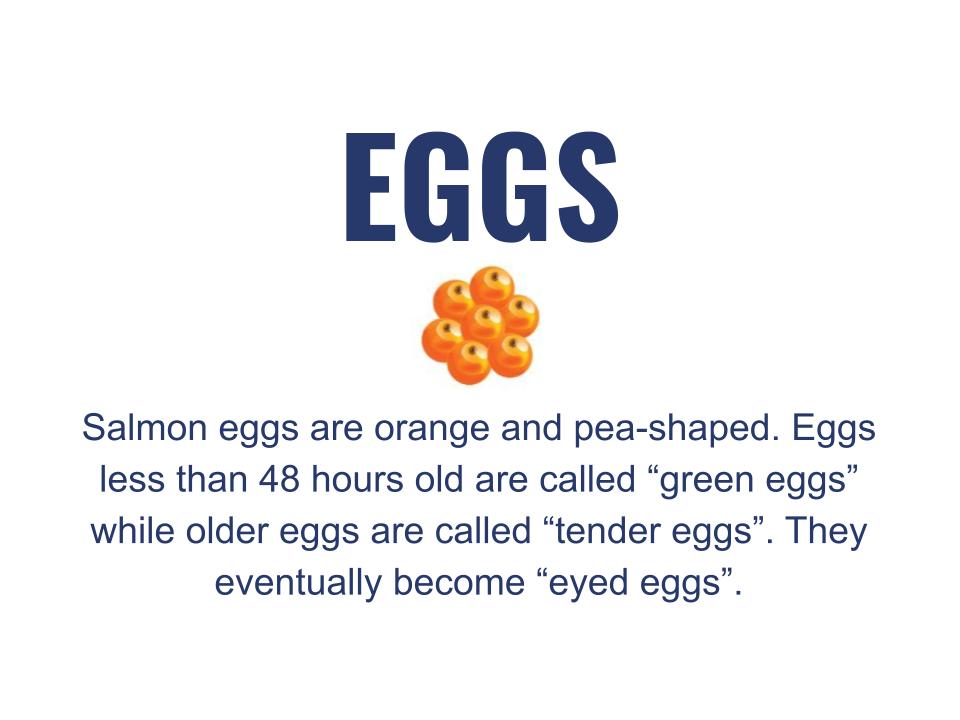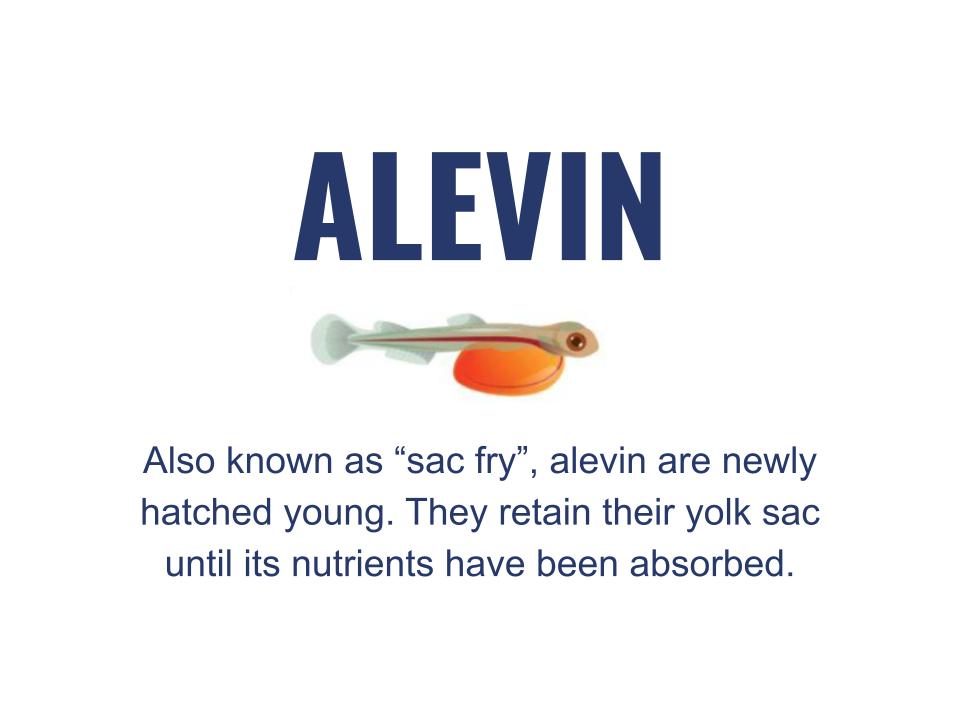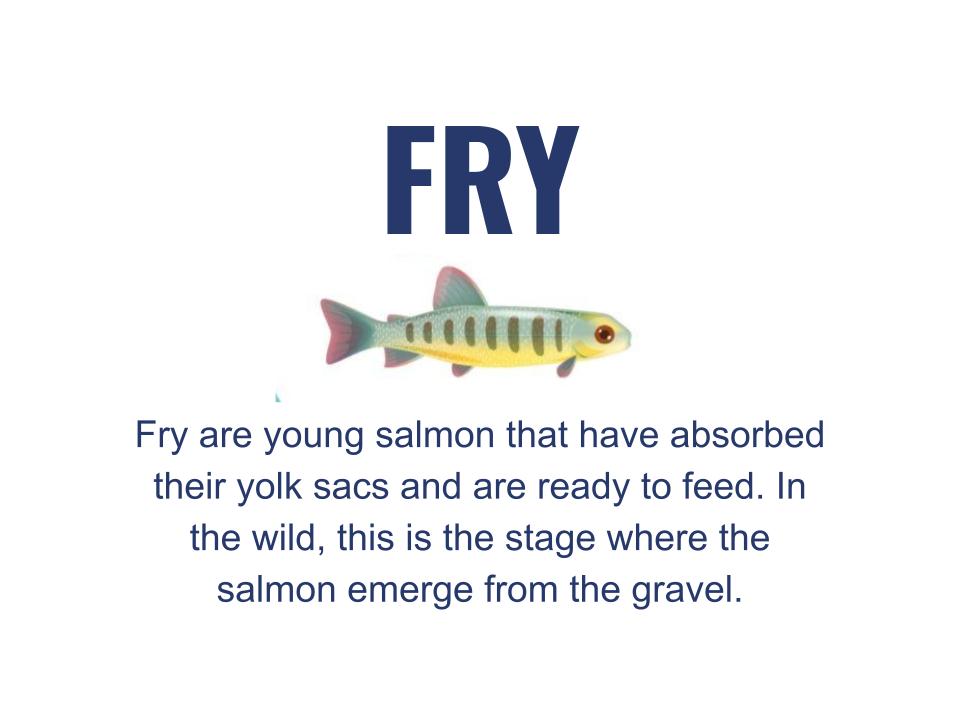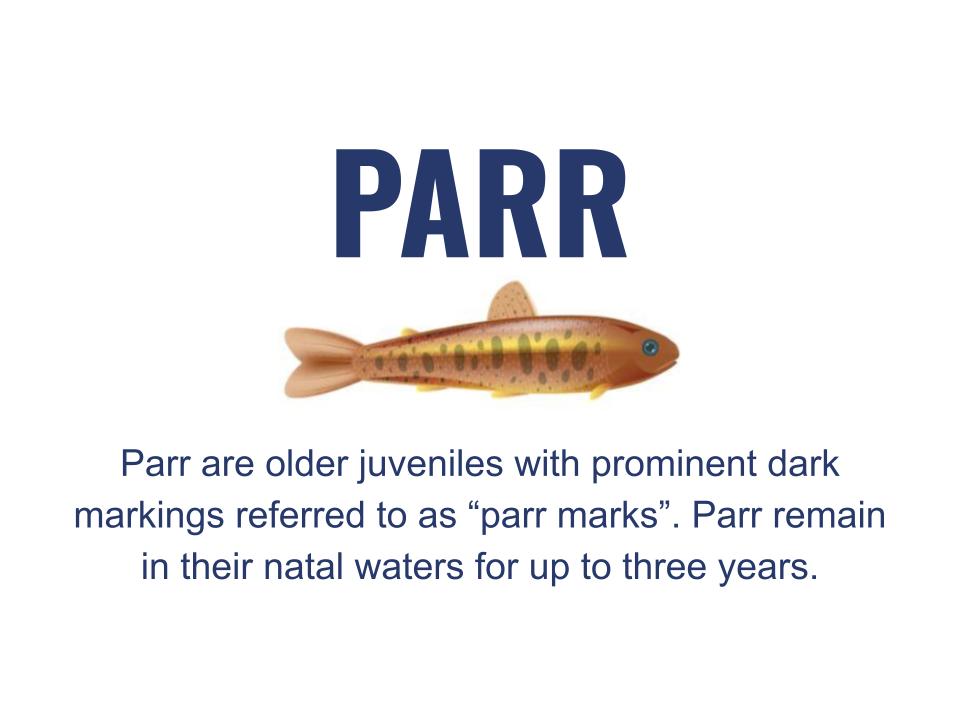Life Cycle
Atlantic salmon are an anadromous species, which means that despite undergoing their greatest feeding and growth in salt water, they spawn in freshwater streams (such as those found in the Miramichi River). After spawning, the adults return to the Atlantic Ocean and the young remain in fresh water for two or three years. When the fish are about 10cm in length, the young salmon, known as smolts, migrate to the ocean where they may live for up to a few years before returning to their natal waters to spawn.
In Canada, Atlantic salmon spawn in October and November. Marine adults move into estuaries and then to freshwater in spring, summer, or early autumn, the approximate time being characteristic for each river. The ability of salmon to surmount falls and other obstacles in the river in order to reach spawning grounds has been a source of wonder for centuries.
As the adults prepare for spawning, the head of the male undergoes transformation. The head elongates and the lower jaw becomes enlarged and hooked at the tip, forming a kype. The actual nesting site is chosen by the female - usually a gravel-bottom riffle area above or below a pool. While the male drives off other male fish and intruders, the female, on her side, uses her caudal fin like a paddle and excavates a nesting depression known as a redd. Adult female salmon can deposit between 600 and 800 eggs per pound of body weight. The eggs are usually pale orange in color and measure between 5 and 7mm in diameter.
Geography
Atlantic salmon occur on both sides of the North Atlantic Ocean. In the eastern Atlantic they are found along the European coast from the White Sea, the coasts of Norway, Sweden, into the Baltic Sea, Finland, and Russia, southward around the British Isles and the coast of western Europe, to the border region of Spain and Portugal (Mino River).
On the western side, they range from the Ungava Bay, Hudson and Davis straits, and southern Greenland southward in most rivers along the Labrador coast, Newfoundland, Quebec, and the Maritime Provinces to the Connecticut River (where it has been reintroduced). They also occur in Iceland.
The Atlantic Salmon have established a range in Europe of between 40 degrees and 70 degrees latitude and in North America of 40 degrees to 60 degrees latitude. There is evidence that during one of the warmer inter-glacial periods, salmon frequented not only European rivers that flowed into the Atlantic, but others like the Ebro, Rhone, and Po that enter the Mediterranean Sea.
History
Few animals have attracted as much attention through the ages as the Atlantic salmon. Etchings of salmon appeared among the 20,000-year-old artifacts of Cro-Magnon man. Atlantic salmon were prized by the Gauls and Romans, an abundant commercial fish in the British Isles, mentioned in the Magna Carta, revered by the sportsman and esteemed by gourmets, its relation with man has been truly unique. Izaak Walton crowned it the ‘King of Freshwater Fish’ in his 17th century classic, The Complete Angler. The last salmon caught on the Thames is believed to have been in the year 1833. Within one hundred years of exploitation on Lake Ontario, the salmon were gone by the year 1890.
In Lake Ontario the erection of mill dams on spawning streams denied access to the salmon. The Atlantic salmon in New Brunswick have suffered from DDT spraying and hydro-electric dam construction.
Declining numbers and loss of whole stocks in some rivers are causing increasing concern. Habitat destruction, denial of access to spawning grounds by dams and other obstructions, overfishing, including high-seas fishing and poaching, pollution, and acid rain are all taking their toll.
For centuries, annual migrations of Atlantic salmon provided commerce, food and sport in the British Isles, Europe, Scandinavia and northeastern North America. The Atlantic salmon was a common and prolific fish in the rivers of colonial New England and Eastern Canada. Great numbers were netted or speared for export, food and even field fertilizer. Beginning in the 1600’s, the pressures of dam construction, overfishing and pollution caused the decline or disappearance of salmon runs across much of its historic range. Salmon that could reach their spawning grounds were often polluted by effluent from industries, which had sprung up during the Industrial Revolution.






